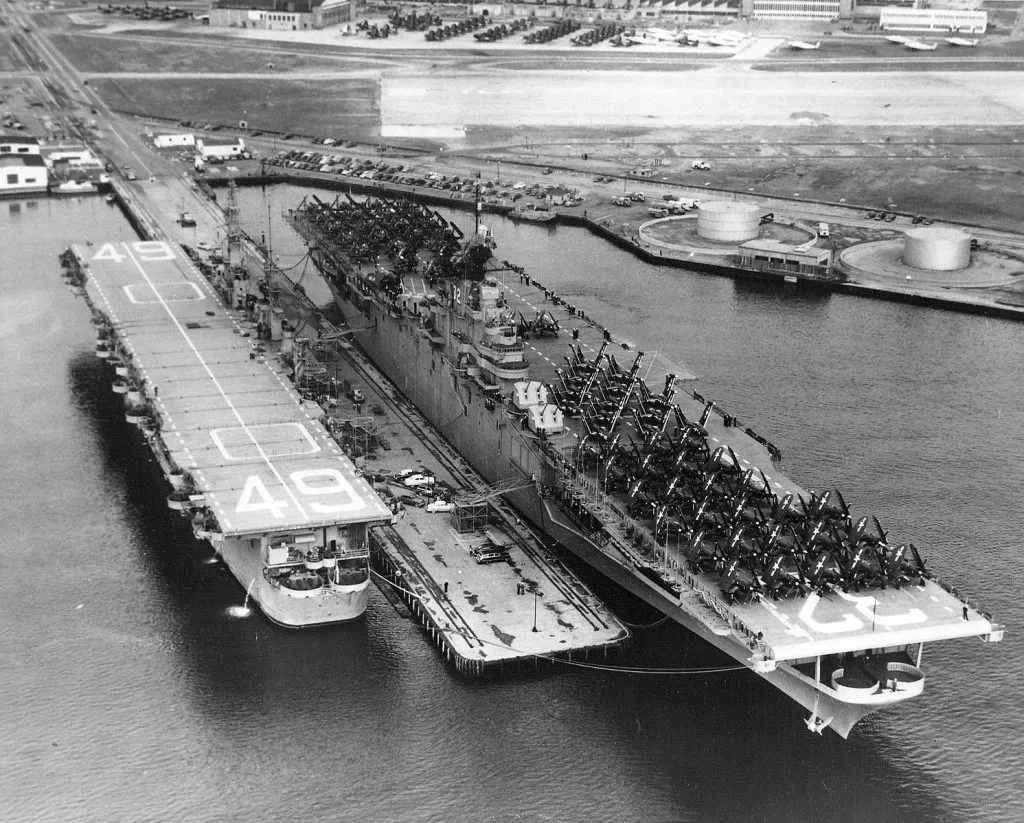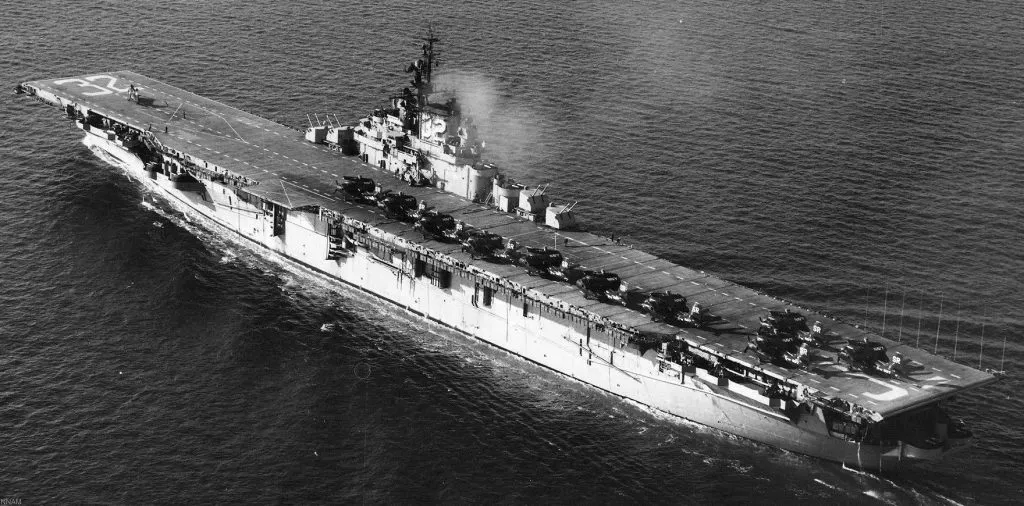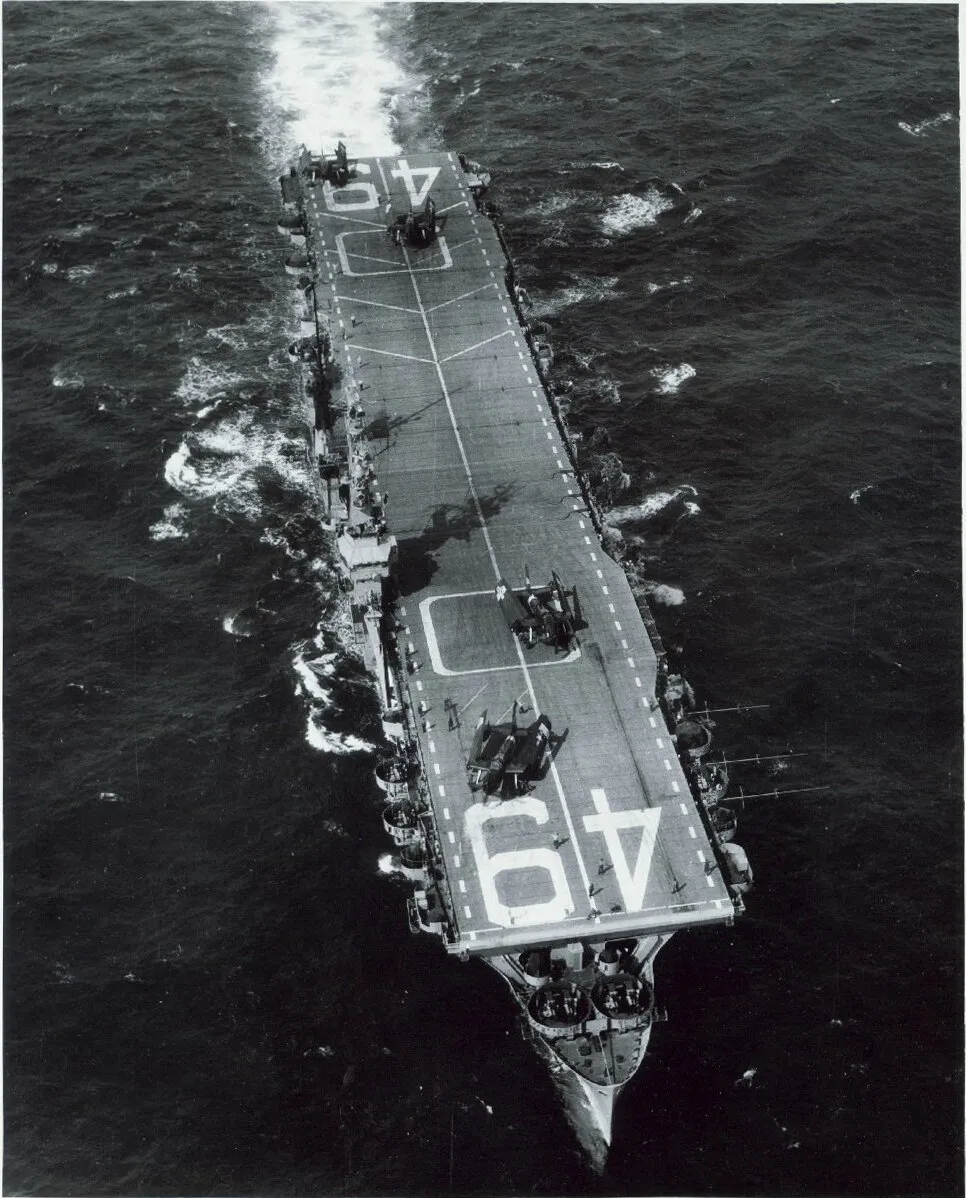
In the early 1950s, two monumental symbols of American naval power, the Essex-class carrier USS Leyte (CV-32) and the Saipan-class carrier USS Wright (CVL-49), were moored at Naval Air Station Quonset Point, Rhode Island. This moment in history represented a significant era of U.S. military strength and technological advancement, during a time when aircraft carriers were transforming into the backbone of naval operations.
The USS Leyte (CV-32), part of the renowned Essex class, was built during World War II and commissioned in 1946. This formidable carrier served as a critical asset to the U.S. Navy, supporting post-war efforts and playing a key role in the early stages of the Korean War. Leyte could carry a large complement of aircraft, making it a floating airbase capable of striking distant targets with precision. It was a symbol of American innovation, bringing power projection to new heights.

On the other hand, the USS Wright (CVL-49), a Saipan-class light carrier, offered a more agile and versatile role within the fleet. Although smaller than the Leyte, it provided significant speed and maneuverability, designed to quickly respond to threats while maintaining a strong offensive capability. Wright was commissioned in 1947, shortly after WWII, and was part of the Navy’s response to the evolving nature of warfare, which demanded faster and more versatile ships. Light carriers like Wright were integral in supporting larger fleet operations, offering air cover and reconnaissance.

Quonset Point Naval Air Station, where these two carriers were docked, was a bustling hub of activity. Known for its strategic location, it served as a key base for the Atlantic Fleet’s air operations. The sight of these two ships together at Quonset Point symbolized not just naval prowess but also the United States’ broader military strategy in the Cold War era. The presence of both an Essex-class and a Saipan-class carrier highlighted the Navy’s commitment to versatility and readiness in an unpredictable global landscape.
The 1950s marked a critical time of change in naval warfare, where aircraft carriers shifted from supporting battleships to becoming the centerpiece of naval fleets. The USS Leyte and USS Wright were prime examples of this transformation, embodying the strength, innovation, and tactical flexibility that would define U.S. naval dominance for decades to come.

Today, these carriers stand as historical icons, representing the evolution of naval engineering and strategy that shaped modern military operations. The image of the USS Leyte and USS Wright moored together at Quonset Point serves as a powerful reminder of the U.S. Navy’s pivotal role in global security during a time of shifting geopolitics.